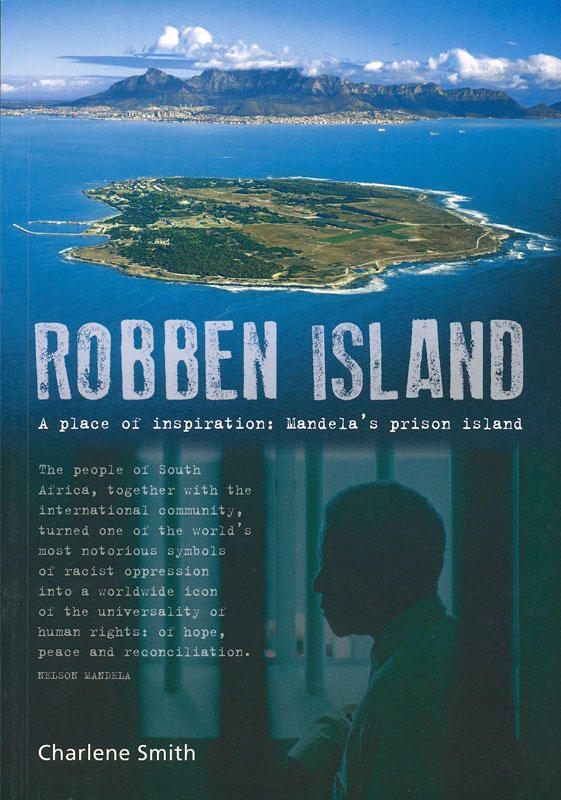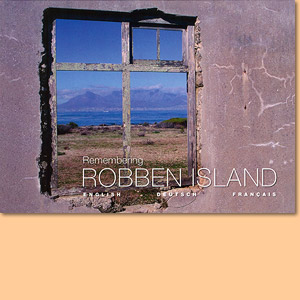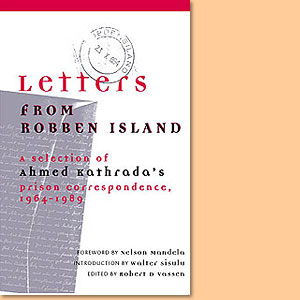Robben Island: A place of Inspiration: Mandela's Prison Island, by Charlene Smith
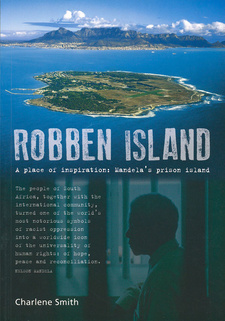
Robben Island: A place of Inspiration: Mandela's Prison Island, by Charlene Smith. Randomhouse Struik, Travel and Heritage. Cape Town, South Africa 2013. ISBN 9781920572907 / ISBN 978-1-920572-90-7
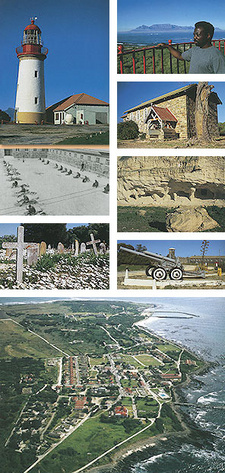
Robben Island: A place of Inspiration. Mandela's Prison Island. ISBN 9781920572907
Few places so small and insignificant looking can boast of having played so important a part in the history of a vast multitude of people. In her book Robben Island: A place of Inspiration: Mandela's Prison Island, Charlene Smith gives a full portrait of the famous island.
Robben Island is flat, and one is surprised that monstrous waves have not reclaimed it. At its highest point it is 30 metres above sea level and receives only 300 millimetres of rain a year. The underlying rock is blue slate of the Malmesbury Series, covered by blown coastal sands and a dusting of limestone. Generations of bleached, crushed shells make the white Island sand glisten with an almost unbearable sheen. When Nelson Mandela underwent cataract surgery in July 1994, surgeon Percy Amoils said the operation was complicated by the fact that his tear ducts were corroded by years of exposure to lime-stone dust from his labours in the quarry. Roads on the Island are made either of dirt or of stone chiselled by political prisoners in the quarries and then tarred. Scattered across the Island are wattle, bluegum, pine, cypress, tamarisk, manitoku and acacia trees, none of which are indigenous. Most trees were imported by seafarers, and were planted between 1892 and 1912. The remaining natural veld was destroyed to make way for fortifications during the Second World War. Bartholomeu Dias was possibly the first mariner to land at Robben Island, in 1488. His second-in-command, Joao del Infanto, was, according to historical records, the first white man to set foot on the Island. Other Portuguese followed in 1502, some living in a large cave which they named Portugal. For aeons before the arrival of Europeans, however, the Khoi and their antecendents had ferried back and forth from the mainland to the Island. Joris van Spilbergen named it Isia de Cornelia after his mother, in 1601. He left two dassies on the Island that his crew had removed from Dassen Island. The dassies thrived and formed the basis of an important meat supply for later generations of seamen. Most mariners referred to the Island as either penguin, seal or Robben Island. In 1611, Jacob Ie Maire and some sailors were left on the Island by Ie Maire's father, Isaac, to club seals for pelts and hunt whales for their blubber. As many as 4005 seal skins were exported to Europe from the Island during the early 17th century. Sir Thomas Herbert, the English explorer, first raised the idea of a victualling station in the Cape. As a consequence, in 1614, at the special request of the English East India Company, 10 convicts were sent to establish a settlement. Little interest was shown in the island after this debacle, other than as a place where seafarers left messages and notes to each other under rocks, or alighted to harvest dassies, seals or the fat-tailed sheep bartered from the Khoi and left to multiply on the Island. But the British had sketched the Island's destiny as a place of banishment. In March 1636, Hendrik Brouwer, former governor-general of the Dutch East Indies, banished to Robben Island the ringleaders of an attempted mutiny. [...]
This is an excerpt from the book: Robben Island: A place of Inspiration: Mandela's Prison Island, by Charlene Smith.
Title: Robben Island
Subtitle: A place of Inspiration: Mandela's Prison Island
Author: Charlene Smith
Publisher: Randomhouse Struik
Imprint: Travel and Heritage
Cape Town, South Africa 2013
ISBN 9781920572907 / ISBN 978-1-920572-90-7
Softcover, 15x21 cm, 176 pages, many photos, 1 map
Smith, Charlene im Namibiana-Buchangebot
Mandela: In Celebration of a Great Life
This is the newest, posthumously published edition of Mandela: In Celebration of a Great Life.
Robben Island: A place of Inspiration. Mandela's Prison Island
Robben Island, best known as Nelson Mandela's prison, here is introduced in various facetts.
Weitere Buchempfehlungen
Remembering Robben Island
Remembering Robben Island is a heritage title in the Picturesque series of Randomhouse Struik.
Letters from Robben Island
Remarkable stories of suffering, humour, humanity and the triumph of the human spirit
Nelson Mandela: The Authorised Comic
This is the authorised comic about the life story of Nelson Mandela.


